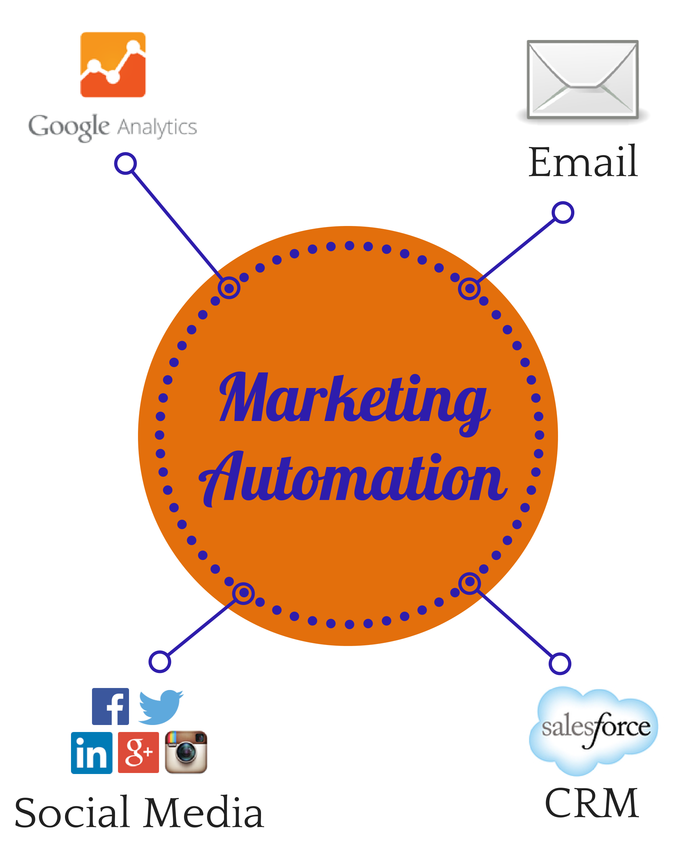How to Eliminate the Gaps in Your Digital Marketing Strategy
Chris Osterhout SVP of Strategy#Digital Marketing, #Inbound Marketing

Learn how you can fill in the gaps between essential tools for online marketing like email campaigns, social media, and Google Analytics.

Online marketing is becoming more and more complex these days. It’s not enough to simply maintain a website; you’ve got to incorporate tools and platforms like Google Analytics, social media channels, Customer Relationship Management (CRM), and email distribution in order to get the word out about your products and services, attract visitors to your site, and convert them into customers. The problem is, none of these tools are connected to each other, so it can be difficult to fill in the gaps between them to understand your visitors’ wants and needs. Let’s look at a few scenarios in which these gaps can come into play:
Scenario #1: Email Campaigns vs. Visitor Activity
Email campaigns are an important part of your marketing strategy, and using a tool like Mailchimp to manage these campaigns can give you a lot of analytical data, such as which recipients opened the emails and/or clicked through to your site. However, these tools don’t provide any information about what happens after that. Which pages did users visit after clicking a link in the email? Did they fill out a form for more information? Did they eventually convert and become a customer? While you can get a picture of how your emails are doing in terms of drawing traffic to your site, the email platform doesn’t provide the qualitative visitor tracking that will show you exactly what each contact or prospect is looking for and how you can meet their needs.
Scenario #2: Social Media vs. Visitor Activity
Similar to email, you want to use social media to generate traffic for your site, and while there are tools such as Tweetdeck or Hootsuite that you can use to automate social media campaigns and track your followers and how they engage with you, these tools don’t tell you what happens after visitors click through to your site. You can see what brings traffic in, but you have no way of knowing what happens next and what these users do once they visit your site.
Scenario #3: Anonymous Visitor Data
You probably use Google Analytics to track your site’s traffic, but while this will show you the number of people who visit your site, as well as information like where they came from and how long they spent on the site, this data is all anonymous; you don’t actually know anything about the individual people who access the site. Visitors may spend days, weeks, or even months reading your site’s content and researching how your products or services can meet their needs or solve their problems before they ever end up filling out a web form to contact you directly. Since you’ve probably kept your forms simple, if the only data you have about them is what they submitted in the form, you won’t know what problems they’ve been trying to solve or what pain points they want to address. Google Analytics can give you the big picture about how people access your site, but it won’t show you the information you need about individual users.
What’s the solution?
The various tools you use in your digital marketing strategy are all essential, but the problem is that they are all separate, and the gaps between Google Analytics, social media, email campaigns, and CRM mean that the data you collect from these various channels is all segmented. But what if you could tie all of this information together and make business decisions based on the aggregated data as it relates to your customers and prospects? Luckily, there’s a solution that does exactly that: a Marketing Automation Platform (MAP).
MAPs like Hubspot are designed to fill in these gaps between the various online marketing tools, consolidating and connecting the systems you use to manage your inbound marketing efforts. A MAP will integrate email campaigns, social media, Google Analytics, and CRM, allowing you to track visitors on an individual basis, getting a complete picture of how they found your site, what pages they visited, what information they were looking for, and how you can meet their needs.
Scenario #4: A Fully Integrated Process
With a MAP that integrates each of the tools and platforms you use, your sales team can be fully prepared when making a sales call with a prospective client. They can view all the relevant information about the client within the CRM, including what pages the client viewed, what forms they filled out, and what emails they received and clicked on. This complete picture will allow you to determine exactly what the client is looking for and demonstrate how your company can answer their questions and solve their problems.
This type of qualitative business intelligence is essential in a fully integrated and aligned inbound marketing strategy. Using a MAP to close the gaps between the tools you use and combine them into a seamless whole will help you receive the best ROI for your website, and it can also decrease the duration of sales cycles and increase the value of customer service. Do you have any questions for us about how to implement a MAP and increase the effectiveness of your digital marketing efforts? Please contact us to speak with an Inbound Marketing Expert, or feel free to leave a comment below.
Related Posts

Why Choose a CMS?
We look at the advantages that a Content Management System (CMS) can bring to your digital and content marketing strategy.

4 Ways to Avoid Disaster When Migrating CMS Platforms
If you have ever migrated from one content management system (CMS) or eCommerce platform to another, you know how many unexpected issues can occur during the migration process.
Results Matter.
We design creative digital solutions that grow your business, strengthen your brand and engage your audience. Our team blends creativity with insights, analytics and technology to deliver beauty, function, accessibility and most of all, ROI. Do you have a project you want to discuss?
Like what you read?
Subscribe to our blog "Diagram Views" for the latest trends in web design, inbound marketing and mobile strategy.
